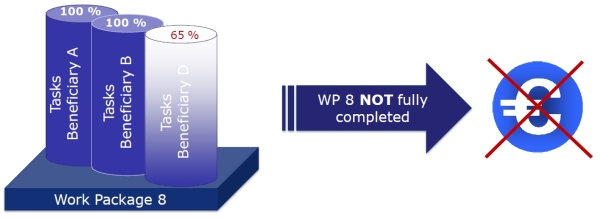Many scientists across Europe with high research and innovation ambitions will have started the new year with some close reading of the recently published – and last – H2020 Work Programme. In the meantime, the European Commission as well as hundreds (if not: thousands) of lobbyists are already heavily engaged in discussions on the contours of the next European Research Programme, currently still called Framework programme 9 (FP9).
As the most sensitive part of these discussions – the budget for the whole programme – is about to start with many ideas, suggestions, rumours and counter-rumours happily making their rounds through the lobby-carrousel, some other – more concrete and even operational – approaches are already actively being communicated by the Commission to the various national contact points.
One of these approaches concerns the Commission’s intention to increase the use of lump-sum financing (*) of projects. The basic idea behind that is that this mechanism – which includes maintaining the flat 25%-rate for the calculation of indirect costs (e.g. overheads) will continue the Commission’s drive toward more simplification of financial and administrative project management as well as to reduce the risks of fraud from wrongly claiming personal costs (from my experience this is mainly caused by the cumbersome way of the process).
According to the current state-of-play, lump-sums are to be agreed during contract negotiations between the EC and the Consortium, meaning that actually incurred costs are no longer relevant and rules for eligibility and financial audits will become a thing of the past. Mind you, this does not mean that there will be no rules at all: the Grant Agreement will likely still specify who will do the work, what the grant attribution to international partners is and who are linked Third Parties and subcontractors. The Commission slides say that financial liability would be calculated based on each beneficiary’s share of the lump sum per work package.
Analysing the available Commission presentations, I can follow and agree with most of their arguments for increasing lump sum project financing as a grant instrument, but there is one aspect which I find quite concerning. I am referring to the Commission’s notion that in future interim payments to funded consortia may not be paid at predefined points in time (except for the pre-financing of course), but only after specific milestones have been achieved. Mind you: in the Commission’s view a milestone is not like any of the milestones that we are used to in H2020 projects. No, in FP9 interim payments would be directly linked to the completion of a particular work package in the project. In practice this would mean that an interim payment would only take place:
- if ALL partners have declared that their individual share of the lump sum allocated to a specific work package has been used up;
- if ALL partners have declared that ALL of their activities in the work package have been fully completed, meaning that the work package as a whole is complete;
- the EC has approved the stated completion of the work package as a milestone.

So if a work package is not completed according to EC requirements in the Grant Agreement, the current view from the EC is that this will reduce the total grant amount and the consortium loses the share allocated to that work package.
Wow! Having been a H2020 project coordinator myself, I can just picture the additional consortium-internal tensions and fights an FP9 coordinator will be faced with. I give two examples below, but I am sure others will be able to think of more scenarios:
- In any project there will be work packages which will – by design – take longer to complete. I wonder how SMEs will be able to pre-finance a much longer stretch of company costs before they are reimbursed through the next interim payment? How to avoid that they plainly refuse to participate in work packages that take longer to complete? Could we then possibly be moving to a situation where academic partners start to act as lenders to their SMEs consortium partners just to keep them on board;
- What will happen if in a work package a partner (inadvertently) causes a significant delay in the technical completion of a given work package, with potentially a ripple-effect on subsequent work packages? Would the other consortium members not start to put so much pressure on this partner that it may be tempted to rush its work and thereby end up delivering a sub-par technical result?
All in all, the proposed structure for FP9 Interim Payments look to me as a recipe for more unnecessary tensions between consortium partners and can only harm the quality of the research innovation FP9 is supposed to generate. The Commission may think that a close link of payment to work-package completion will make projects finish faster, but show me evidence that there is (still) a significant number of H2020 projects that overrun their planned duration. In previous programmes (pre-FP7), long project duration extensions were approved fairly regularly, but we all know that in H2020 your chances of getting Commission approval for an extension beyond six months is already almost zero. I therefore fail to see why the schedule for interim payments cannot stay the way they are in H2020. To me, the risks of increased tension between project partners does not weigh up against maintaining a balanced management of collaborative projects. “If it ain’t broke, don’t try to fix it!”
Roy Pennings
(*) Please note that ‘lump sums’ already feature in a limited fashion in H2020. This article is based on presentations by the European Commission on the newly proposed Lump Sum Pilot in H2020 (and a revised Model Grant Agreement) which will then likely become the blueprint structure for FP9 lump sum financing.
